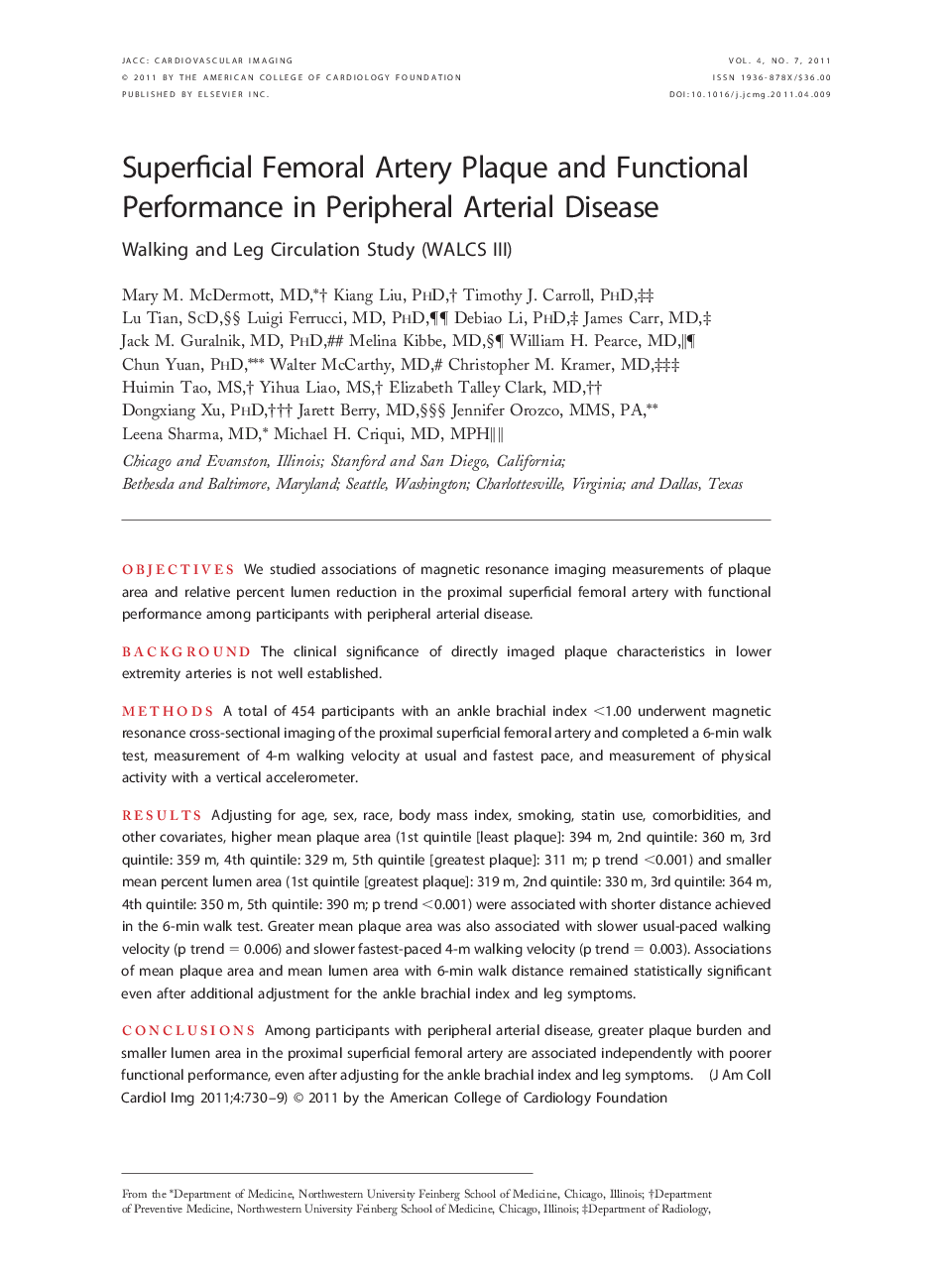| Article ID | Journal | Published Year | Pages | File Type |
|---|---|---|---|---|
| 2938858 | JACC: Cardiovascular Imaging | 2011 | 10 Pages |
ObjectivesWe studied associations of magnetic resonance imaging measurements of plaque area and relative percent lumen reduction in the proximal superficial femoral artery with functional performance among participants with peripheral arterial disease.BackgroundThe clinical significance of directly imaged plaque characteristics in lower extremity arteries is not well established.MethodsA total of 454 participants with an ankle brachial index <1.00 underwent magnetic resonance cross-sectional imaging of the proximal superficial femoral artery and completed a 6-min walk test, measurement of 4-m walking velocity at usual and fastest pace, and measurement of physical activity with a vertical accelerometer.ResultsAdjusting for age, sex, race, body mass index, smoking, statin use, comorbidities, and other covariates, higher mean plaque area (1st quintile [least plaque]: 394 m, 2nd quintile: 360 m, 3rd quintile: 359 m, 4th quintile: 329 m, 5th quintile [greatest plaque]: 311 m; p trend <0.001) and smaller mean percent lumen area (1st quintile [greatest plaque]: 319 m, 2nd quintile: 330 m, 3rd quintile: 364 m, 4th quintile: 350 m, 5th quintile: 390 m; p trend <0.001) were associated with shorter distance achieved in the 6-min walk test. Greater mean plaque area was also associated with slower usual-paced walking velocity (p trend = 0.006) and slower fastest-paced 4-m walking velocity (p trend = 0.003). Associations of mean plaque area and mean lumen area with 6-min walk distance remained statistically significant even after additional adjustment for the ankle brachial index and leg symptoms.ConclusionsAmong participants with peripheral arterial disease, greater plaque burden and smaller lumen area in the proximal superficial femoral artery are associated independently with poorer functional performance, even after adjusting for the ankle brachial index and leg symptoms.
